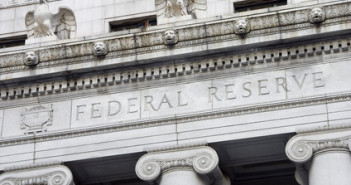The Federal Reserve would not want to make a step forward with tapering only to be forced to step backwards by subsequent events, says Simon Smith of FxPro. He sees a better chance of a change in the statement only in July rather than in June. The question of QE tapering is one of the biggest market movers.
In the interview below, Smith also discusses at what level and circumstances Japan could intervene to weaken the yen, the meaning of what Draghi actually said about negative interest rates (and what could force them), the next moves of the Aussie and more.
 Simon has over seventeen years experience of macro forecasting and investment strategy research. Prior to joining FxPro in May 2010, Simon was a consultant with Thomson Reuters, having spent four years as Chief Economist at Weavering Capital. He has held economic and strategy positions with Standard & Poor’s, together with consultancy firms 4Cast and MMS International. Simon holds an MSc. in Economics from the University of London and a BSc. from Brunel University.
Simon has over seventeen years experience of macro forecasting and investment strategy research. Prior to joining FxPro in May 2010, Simon was a consultant with Thomson Reuters, having spent four years as Chief Economist at Weavering Capital. He has held economic and strategy positions with Standard & Poor’s, together with consultancy firms 4Cast and MMS International. Simon holds an MSc. in Economics from the University of London and a BSc. from Brunel University.
- Do you think that the Fed will hint in the upcoming meeting that the next move in monetary policy will be reducing the amount of bond buys?
To do so could be seen as neat first step along the road. At present, they say they are “prepared to increase or reduce the pace of purchases..”. Put simply, they want to do it incrementally, but to be sure with ever step towards removing policy accommodation, they will not be forced to step backwards by subsequent events. At some point, this wording will not fit with a committee becoming increasingly concerned with the consequences of continued asset purchases. For choice, I think June will be too early for them. July might be a better time to adjust the statement to reflect the changing pattern of opinions. We could get some subtle changes in the statement to pre-empt this as early as June. The bottom line is that the labour market is doing well, but not well enough.
- Did Draghi put the negative interest rate back genie back in the bottle? What could trigger setting a negative deposit rate?
I don’t think so. It partly comes down to his choice of words, where he said this and other options were all “on the shelf”. In English, this is taken as meaning you are not going to touch them, whereas I think he meant that they were there, ready to be used if necessary. This is the downside of having a news conference of this nature after the policy meeting, things can get mis-interpreted in comparison to the careful messaging of an agreed statement. I don’t think his stance has changed. Three things could trigger a negative deposit rate. Firstly, a cut in the main refinancing rate (which essentially boils down to a deterioration in the growth/inflation outlook), an appreciation of the euro or a further reduction in the amount that banks are borrowing from the deposit facility. The latter naturally reduces the negative impact of such a move on banks and means the negative rate stands more as a ‘threat’ to banks tempted to re-deposit funds back to the ECB.
- In case the yen re-strengthens, is there a chance that the Japanese authorities will intervene in currency markets?
I think at present it’s a low risk and would require the yen to appreciate significantly from here, to at least see USDJPY around at 90. Three reasons for this. Firstly, exchange rates don’t move in straight lines and are prone to correction, so it’s to be expected. Secondly, domestic policies are aligned to deliver a weaker currency and as has been the case for most of the time, they should exert themselves once correction has run its course. Finally, it’s highly unlikely that the major central banks would support intervention, so the MoF/BoJ would be on their own. In this situation, the chances of success are greatly reduced and we’d shift to a perception of the international community being generally being accommodating towards a weaker yen to one where they were perceived as opposed, even if the distinction was more subtle than that. This makes intervention a very risky strategy credibility wise, following a period during which the Japanese authorities have made more progress in the past 6 months than the previous 6 year.
- The Australian dollar continues falling and positioning has become extreme according to the recent CFTC data. Can we expect a big correction or a continuation of the trend, as the Aussie has many reasons to fall?
The Aussie has a history of going up the escalator and down the lift shaft, as you can see on the monthly chart going back over the past ten years or so. The weekly charts suggest the current move is the most stretched since the late part of 2008, which was an extreme time for all markets. This does mean that we are at a higher risk of corrective activity. Of course, the bigger picture still favours a lower Aussie, so timing and catching such a correction will not be easy.
- Volatility in currency markets has become extreme. Do you see it calming down in the summer months or can we expect a “hot summer” in markets due to the speculation about the Fed’s moves?
The context is important. In terms of 2010 to now, we are still below the average volatility that has prevailed over this period, using Deutsche Bank’s CVIX index, similar to the equities VIX. But in weekly terms we are at the highs for the current year. Volatility in previous summers has often been caused by prevailing events (Eurozone crisis, US budget ceiling etc.). This summer is more at risk of more generalised volatility from different policy and economic cycles, together with the fall-out in other asset markets from continued quantitative easing and the prospect of its withdrawal (e.g. in the US).
Further reading: the previous interview with Smith, where he mentioned the chance of more QE in the UK at some point.
